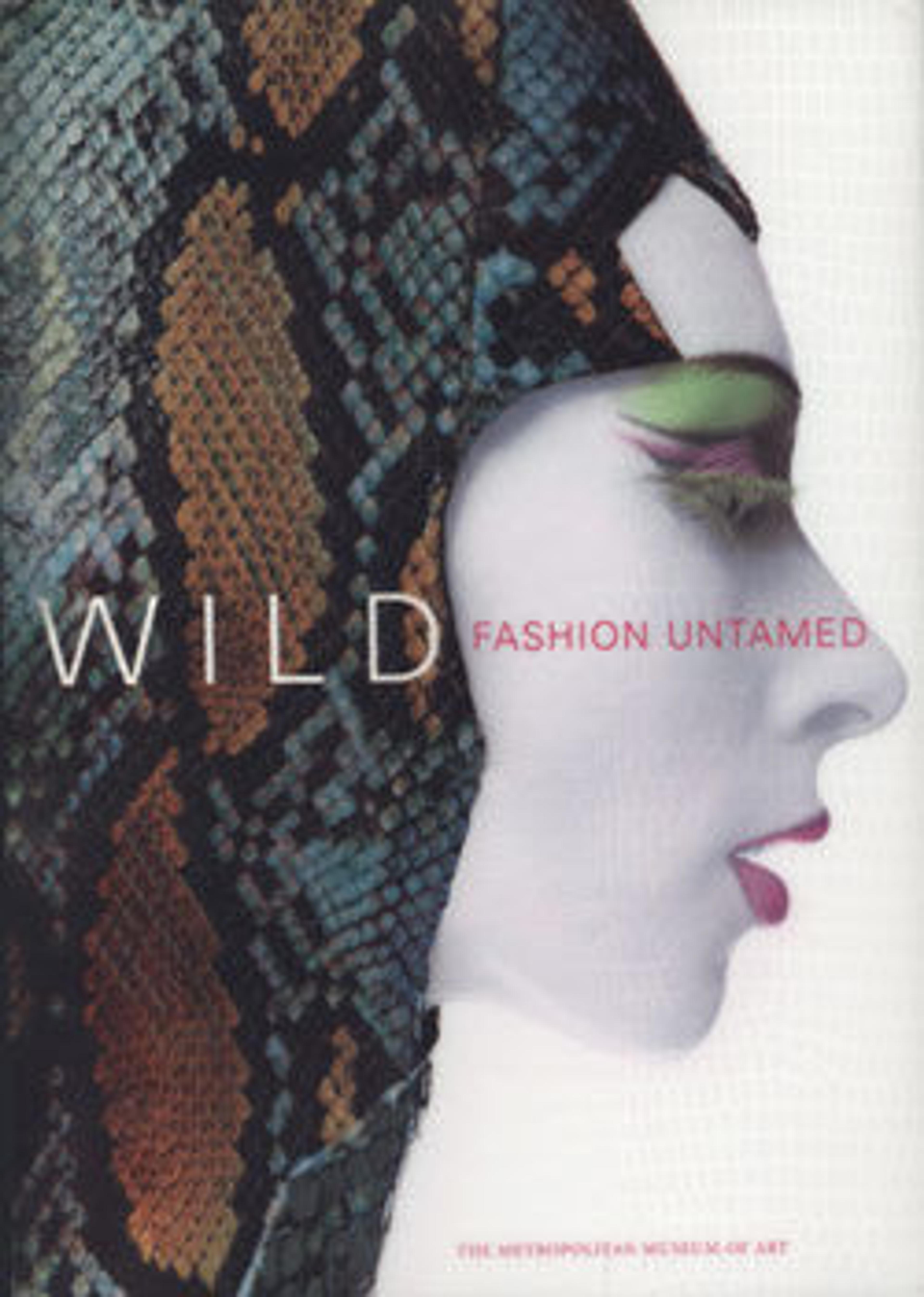
Wild: Fashion Untamed
Wild: Fashion Untamed examines the practical, spiritual, psychosexual, and socioeconomic underpinnings of fashion's fascination with animals and birds. Skins, furs, feathers, and animals prints have played a major role in the history of fashion. In this volume's five chapters, deer, tigers, zebras, leopards, spiders, serpents, crocodiles, and the plumage of a variety of birds are referenced in examples that vividly convey how artists and designers have found inspiration from sources in prehistory, ancient mythology, and native cultures and have quoted the physical and sexual characteristics of the animal kingdom to evoke ideals of femininity. Examples from the history of art portraying the fashions and symbolisms of their time are discussed in concert with creations by contemporary designers. A prehistoric cave painting, for example, finds a striking corollary in an image showing a 1999–2000 Jean Paul Gaultier ensemble. A Minoan Snake Goddess proves a suitable companion to John Galliano's reptilian-patterned leather gown from his 2002–2003 Dior collection. A vintage photograph of Sitting Bull wearing the Native American feathered war bonnet appears alongside a similar-looking headdress of 1987 by Bob Mackie.
The uses of fur to announce not only the wearer's wealth and power but also that of a nation are revealed in an early eighteenth-century portrait of Louis XIV in an ermine robe. Sean "P. Diddy" Combs and supermodel Kate Moss wear sumptuous furs in a striking present-day manifestation of such economic exhibitionism. The animal rights activists and animal welfare organizations that have emerged since the 1970s are discussed, accompanied by a potent example of a Lynx advertising campaign depicting a woman in a fur hat with a skinned dog around her neck.
Thierry Mugler's black leather and insect-like silhouettes convey a deadly fetishized femininity, while Dolce & Gabbana's leopard prints display a softer femininity reminiscent of the 1950s Hollywood siren, as exemplified by a publicity still for MGM Studios of Ava Gardner in a leopard patterned bathing costume. A striking image of a group of women wearing black-and-white zebra patterns in a room filled with tellingly matching accoutrements represents the signature animal prints of Roberto Cavalli, who has widely celebrated the power and beauty of the wild kingdom.
WILD: Fashion Untamed continues the ongoing objective of the Metropolitan Museum's Costume Institute to document and interpret the diverse aspects of historical and contemporary fashion. This generously illustrated volume effectively highlights humanity's ongoing obsession with animals in clothing from prehistoric times to the present. Faunal apparel has always represented and will continue to represent one of our more primal instincts, even as it also addresses issues of changing social attitudes about the relationships of human to animal and human to human. In the Introduction to this fascinating publication, Andrew Bolton, Associate Curator, The Costume Institute, writes: "Straddling the ideologies of nature and artifice, designers have sought to shape ideals of femininity that evoke and invoke the physical and symbolic characteristics of animals, ideals that have resonance in both the past and the present."
Met Art in Publication
Citation
Bolton, Andrew, Shannon Bell-Price, Elyssa Da Cruz, Philippe De Montebello, and Metropolitan Museum of Art, eds. 2004. Wild: Fashion Untamed: This Volume Has Been Published in Conjunction with the Exhibition “WILD: Fashion Untamed,” Held at The Metropolitan Museum of Art, New York, Dec. 7,2004 - March 13,2005. New York: The Metropolitan Museum of Art.
